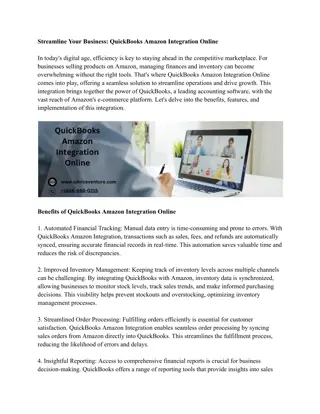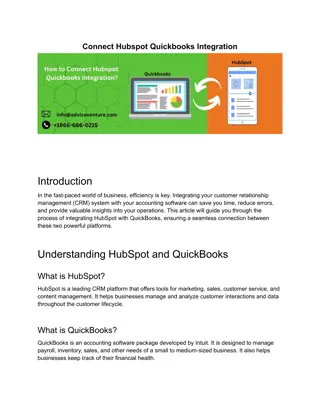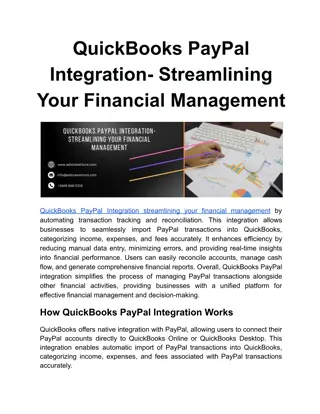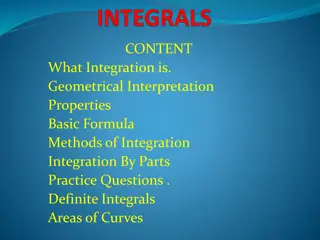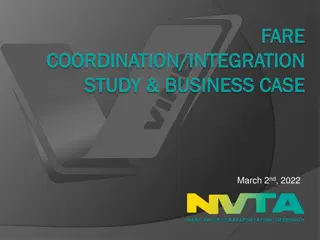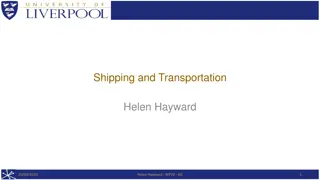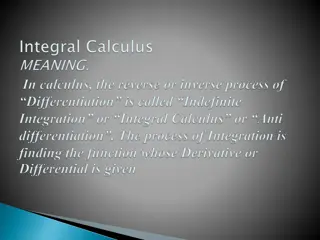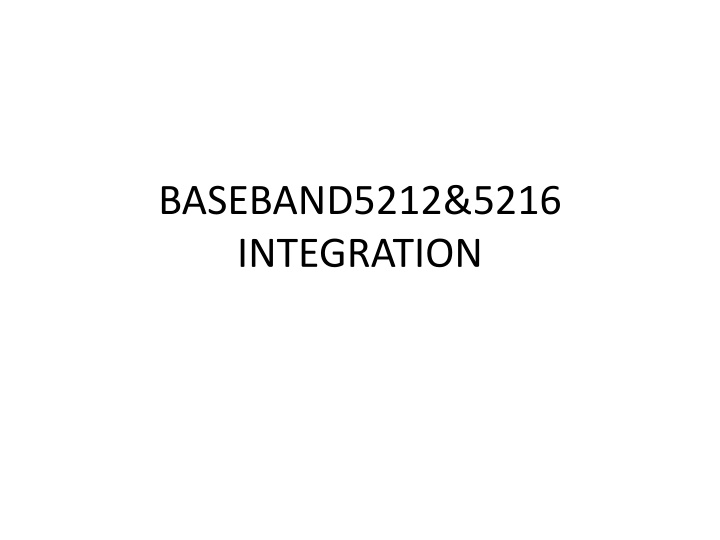
Baseband Integration Process for RBS6601 - Step-By-Step Guide
Discover the detailed steps for integrating Baseband 5216 in RBS6601, including pre-requisite setup, client PC configurations, semi-auto integration checks, and more. Ensure a seamless integration process with this comprehensive guide.
Download Presentation

Please find below an Image/Link to download the presentation.
The content on the website is provided AS IS for your information and personal use only. It may not be sold, licensed, or shared on other websites without obtaining consent from the author. If you encounter any issues during the download, it is possible that the publisher has removed the file from their server.
You are allowed to download the files provided on this website for personal or commercial use, subject to the condition that they are used lawfully. All files are the property of their respective owners.
The content on the website is provided AS IS for your information and personal use only. It may not be sold, licensed, or shared on other websites without obtaining consent from the author.
E N D
Presentation Transcript
BASEBAND5212&5216 INTEGRATION
Pre-requisite Category Netconf (XML) Script Item Format Netconf (xml) Netconf (xml) Netconf (xml) Netconf (xml) Netconf (xml) Moshell (.mos) Moshell (.mos) Moshell (.mos) ZIP XML Comment RbsSummary File SiteBasic Template SiteEquipment Template TN Template RN Template Feature Activation Script Post Integration Script Cell Relation Script Upgrade Package (UP) License Key File (LKF) Client PC Ethernet Cable MOS Script UP LKF PC Cable Baseband LMT - PC
Pre-requisite Baseband5216 should be installed in RBS6601 and should be power on. Scripts and UP package prepared and stored in Client PC SFTP Server installed in Client PC Cygwin and moshell for latest version
Client PC Setup (1) Client PC connects to Baseband5216 LMT port Set Client PC IP address - IP Address : 169.254.2.1 - Subnet mask : 255.255.0.0 - Default gateway : 169.254.2.2
Client PC Setup (2) Stop Symantec Management Stop firewall Right click the icon of Symantec and waiting until Disabled Symantec Endpoint Protection available to click
Client PC Setup (3) Client PC SFTP Server Setting - IP Address : 169.254.2.1 - Username : ftp - Password : ftp Save integration files (XML, UP, MOS) to SFTP HOME Directory Turn on SFTP Server
Semi auto-integration(pre-check) Check following from xxx_RbsSummaryFile.xml XML script
Semi auto-integration Auto-Integration Tool Page Recommand explorer: google chrome - Tool Web Page : https://169.254.2.2:8080 (Before Integration) https://169.254.2.2/autointegration.html https://169.254.2.2 (After Integration) Host : 169.254.2.1 Username : ftp Password : ftp Site Installation File : <File_Name>
Semi auto-integration Click Downloading Files (finish within 10 mins) SW Package Download success (Finished) Prepare Filesystem success (Finished) Unpack and Install SW success (Successful)
Semi auto-integration After UP Installation, shows Download Completed Integrate button is activated and click it to integrate
Semi auto-integration After press Integrate button Node will Restart and start integrate Configuration File In case error happens during integration, integration should be stopped and board will restore to factory setting. ESI log could be collected for integration failure. If integration finishes with no error no progress message in Auto- Integration Log Wait until TN port LED is ON and access node with moshell to run scripts.
Semi auto-Integration After Auto-Integration finishes, logon with moshell. Need to put in Username/Password after lt all Maintenance User Id/Password: rbs/rbs Type rbs/rbs
Run TN/RN Script Open an Terminal and run following TN/RN script running commands File path should be put in correctly. ssh -o PubKeyAuthentication=no -o UserKnownHostsFile=/dev/null -o ForwardX11=no -p 830 rbs@169.254.2.2 s <TN XML Script File Name> ssh -o PubKeyAuthentication=no -o UserKnownHostsFile=/dev/null -o ForwardX11=no -p 830 rbs@169.254.2.2 s <RN XML Script File Name> Command Example ssh -o PubKeyAuthentication=no -o UserKnownHostsFile=/dev/null -o ForwardX11=no -p 830 rbs@169.254.2.2 -s netconf < 3_eNB12_TN_netconfv2.xml ssh -o PubKeyAuthentication=no -o UserKnownHostsFile=/dev/null -o ForwardX11=no -p 830 rbs@169.254.2.2 -s netconf < 4_eNB12_RBS6601_RN_netconfv2.xml Contact DT responsible in case error happens with script running.
Run Post Integration Script Logon with moshell and run Post Integration Script Run script with following command run <script_name> Run script example run 5_featureActivation.mos run 6_PostIntegration.mos run 7_eutranfreq.mos After script running, lt all to load new configuration and save CV cvmk <cv_name> or acc BrM=1,BrmBackupManager=1 createBackup cvmk <cv_name> or acc BrM=1,BrmBackupManager=1 createBackup
Post-Check After save CV, Node Cold Restart acc FieldReplaceableUnit=1 restartUnit After node is up, check following with moshell - Unlock TermPointToMME, EUtranCellFDD - MME, EUtranCellFDD, Sector, SectorCarrier, Radio Unit Status - inv to check License Status - Node configuration parameter and System Constant Status - Alarm Status - Save CV
Command list for baseband ####### General ######## G1 G2 cvls st cell st ru lh ru lmclist cvls st cell st ru lh ru lmclist /sysm/discspace space must be below 80%, otherwise remove logs and UPs ( use /sysm/discspace c. But be aware that you then remove all PMDs. Best is to remove PMDs as soon as you have disk full alarm. ) get Equipment=1,FieldReplaceableUnit=1 productData al pst command is currently not supported on COM nodes hget ^EUtranCellFDD CellIdGroup|SubCellId get . earfcn vols get Subrack=1,Slot=1 productData al pst cabx hget ^EUtranCellFDD CellIdGroup|SubCellId get . earfcn
Command list for baseband ####### SCTP ###### G1 G2 get . initialAdRecWin get . numberOfAssociations get . initARWnd sctp -config | grep -i "SCTP_SYS_PAR_NUMBER_OF_ASSOCS" ####### SC ######### G1 G2 fget NodeManagementFunction=1,SystemConstants=1 systConstants sysconread ####### sCell ####### ####### Feature License ######## G1 G2 G1 G2 get . scellc 1 get . scellc 1 inv inv


